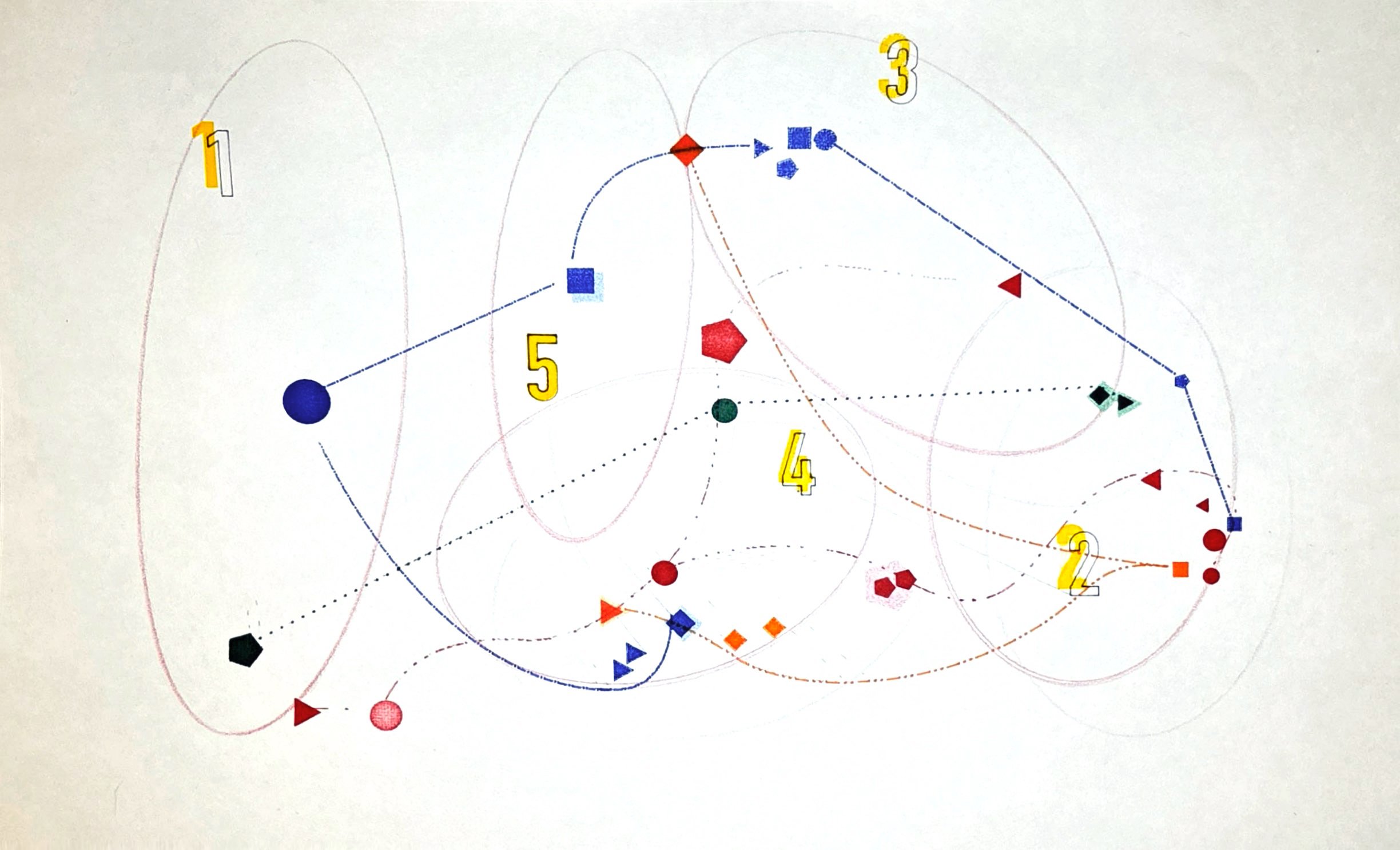Figure and Ground
a project “translating” aspects of my digital practice into the analog realm
Figure and Ground is a growing body of work that combines written music, improvisation, and digital technologies, united by the idea of translation.
The “ground“ is the digital algorithmic process operating and the multiple iterations translating it; the “figure” is the surface that emerges from the ultimate physical and/or acoustic interpretation of it.
The monoprint score of Figure and Ground: Traces
Video of the making of the score for Figure and Ground: Traces using a UUNA TEK pen plotter and a variety of pens and pencils.
Figure and Ground Works
Juxtaposed Lines I a (2024) explores my juxtaposition of synthetic long-tones with acoustically produced sound, an element of my digital work dating to the mid-1990s. The origin of this interest comes from extracting and foregrounding elements from acoustic sound, a practice which has come to operate for me as a kind of measurement device, the imposition of a baseline (not bass line!) against which raw, noisy, organic sound can be understood.
Katabasis (2018) is for four (or more) instruments (open instrumentation), another example of translating a digital technique (granular synthesis). It captures well my interest in small, quiet, delicate sounds. I appreciate space and silence in music, and often use spatialized sounds that seem to emanate from specific points in space. Combined with the juxtaposition of long-tones, these techniques draw attention to the sonic details found in the world we inhabit.
Figure and Ground 1 (2024) is for chamber orchestra, an example of translating a digital technique (granular synthesis) to a larger acoustic ensemble using traditional notation in non-traditional ways.
Figure and Ground: Traces
One approach to my music-making features performer improvisation with audio-reactive software over a digital network. To translate this, I start with remote sessions of directed improv, using interactive electronics tracking pitch, volume, and activity density to inform the generation of electronic sound. I record the data generated by the electronics in response to the musicians’ performance as a list of values (not sound). I then generate visualizations from the data, like bar graphs or scatter plots, which form the basis of a new graphic score for the ensemble to perform.
This process is similar to printmaking, where the artist carves a block, inks it, and applies it to paper to create the final work. The block isn’t the artwork but an artifact of the process. Similarly, the recording sessions are the “block,” and the graphic score, re-interpreted by live musicians, is the final artwork.
The score above is the first created using this method, and the recording is a performance by the percussion duo low pass.
The Minnesota State Arts Board awarded me a Creative Individuals Grant to create more work like this for low pass, which they will premiere in autumn 2025.
